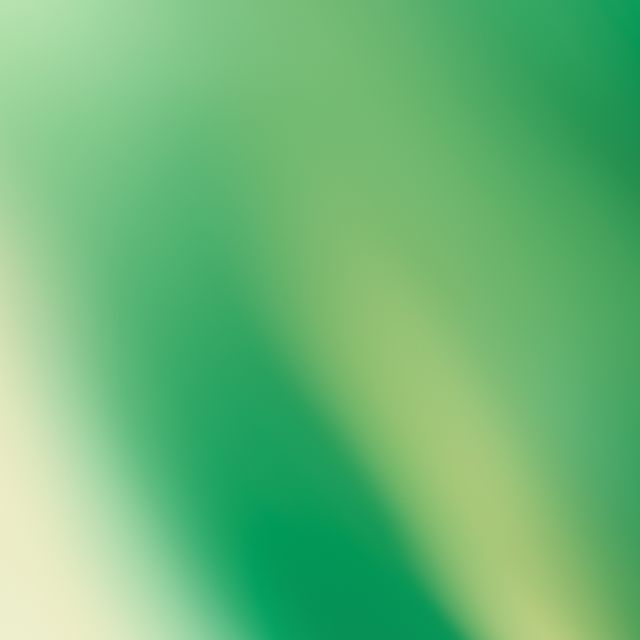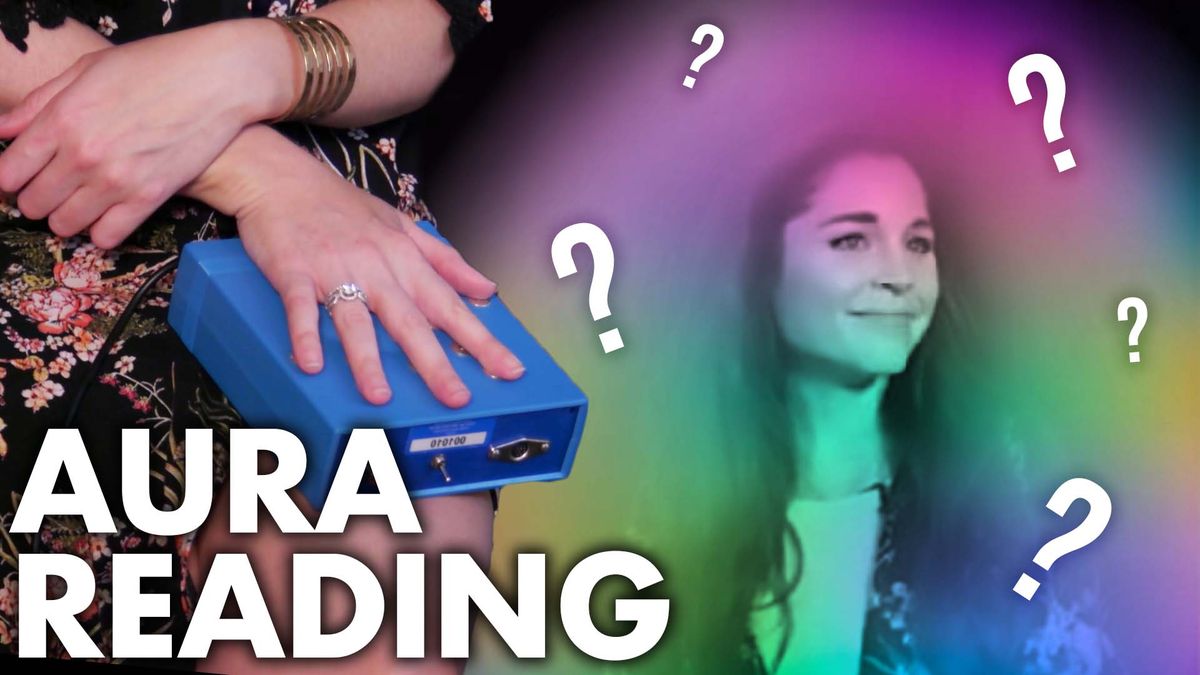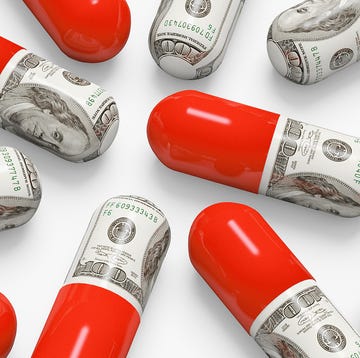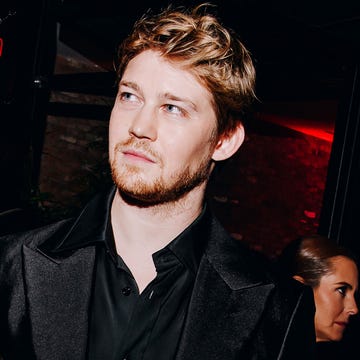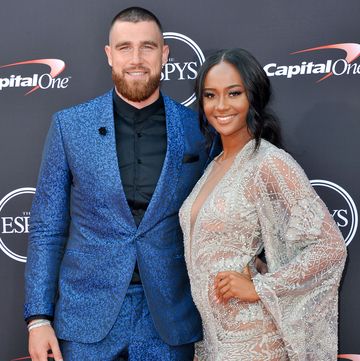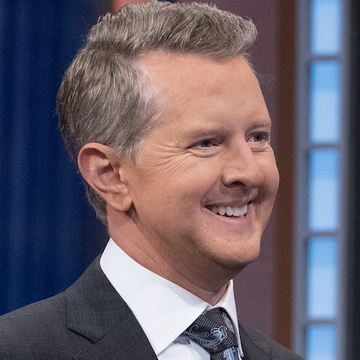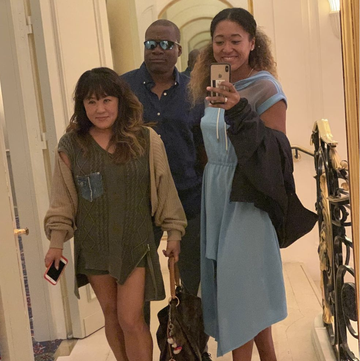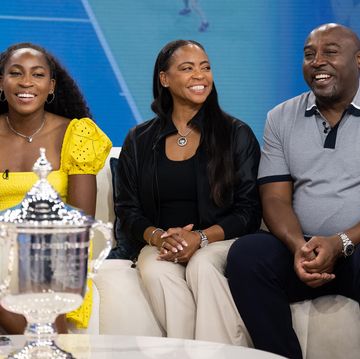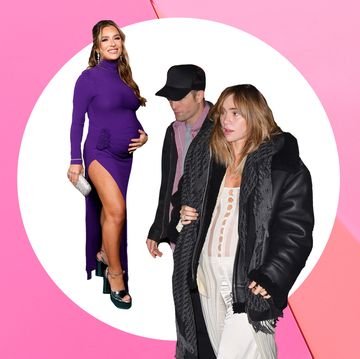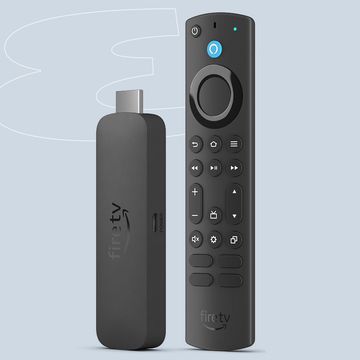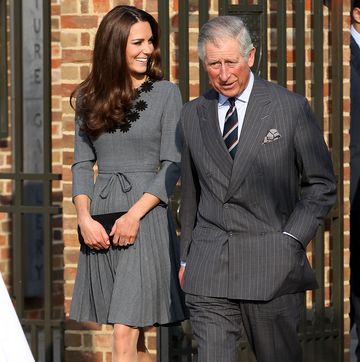Everyone gives off a certain energy that can tell you, within minutes of meeting them, whether you'll click, butt heads, or try to casually avoid each other the next time you're in the same room. Call it a vibe, a sense... or an aura. Even if you can't see the other person's aura, you can feel it.
But, before you go judging someone off their aura from a chance encounter, it's important to know that a person's aura colors tend to change over time, says Eileen Lee, an aura reader, photographer, and founder of AURA AURA. While every aura color is subject to change (contrary to popular belief, they're not purely based on personality traits), there's one aura color that's all about change: green. Here's everything you need to know about the emerald hue, according to an expert.
What does the green aura mean?
The green aura relates to the heart chakra, which "governs our sense of love—love for ourselves, but also for other people," says Lee. "It deals with things like compassion, forgiveness, gratitude, self-understanding, and our connectedness with ourselves and also our environment, including our relationships." Basically, the green aura determines how you navigate your relationship with just about everything in life, from friends to finances.
But for the money-minded, don't get too excited. Despite popular belief, green doesn't represent that money is coming to you, says Lee. If anything, green just represents your relationship with abundance, either having an abundance mindset or scarcity mindset. In that regard, it's all about trying to find balance in your life (more on that in a bit).
Ultimately, because your relationship with the world around you can shift often, "as [you] go through a lot of changes and growth, [the green aura] does represent that transformation," says Lee. But keep in mind that this typically represents an internal shift, not an external one based on tangible changes within our environment.
What personality traits are associated with a green aura?
"Green is often associated with people who are in balance or in harmony," says Lee. Sounds blissful, right? Well, as Kermit said, it's not always easy being green. "When we see green in our auras, one perspective is that perhaps that person is in a state of trying to find more harmony and balance with either themselves or within some kind of relationship with something in their lives."
In Lee's experience taking aura photos, green often shows up when a person is taking on new roles in life, whether it's personal (becoming a parent) or professional (getting promoted). "Anytime we go through a learning experience like that, we're trying to find some sort of harmony and balance, right?" says Lee. "That usually will produce green in someone's aura."
What causes the green aura color?
Because green is reflective of internal growth and change, Lee often sees the aura color pop up when people are focusing on either self-improvement or self-care (meaning, going to therapy, not taking a bath). On the flip side, when we're out of alignment with the green aura, that can be traced back to feelings of insecurity, resentment, and jealousy, says Lee.
And though the green aura is all about internal change, it can be caused by external factors. "Sometimes, when people are going through some sort of traumatic experience or loss, that can produce a green," says Lee, noting that grief and heartbreak are common green-inducing life events. In fact, she adds that is "such a wide breadth of situational aspects to what can bring about green within our auras." There's a good chance you could have green somewhere in your aura at any time in your life.
Want to learn more about how aura photography works? Watch this video:
Is green commonly associated with any other aura colors?
Green can show up with any other aura colors, says Lee, but red is a particularly interesting pairing. Those hues may be polar opposites on the color wheel, they have a way of complementing each other within a person's aura.
"When we go through growth and self-evolution, that brings about red. Red is about the idea of when you change, reality follows suit," says Lee. "But I've also seen the opposite where because something in life has changed—and it's maybe not within your control—then that leads to you to shift something within yourself, too." Essentially, when green and red show up in your aura together, an internal change creates an external change or vice versa.
Besides red, Lee sometimes sees green paired with indigo blue. "That usually reflects more of that self-growth aspect because indigo is really about trusting your intuition, going with the flow, and things of that nature," she says. "Anytime I see a green [with] indigo blue, it's definitely more internal."
While color combinations tend to be the most common, Lee says it's interesting when she sees someone whose aura is all green with no other color because it's signifies that they are really going through something.
The placement of the green color in your aura is important, too. The lime-like shade can be anywhere within the aura, says Lee, but different spots mean different things, naturally. "When green is surrounding us, we're kind of embodying those qualities versus when it's up above us—anywhere over our heads—it's something that we're currently working with and currently experiencing," she explains.
What role does the green aura color play within all the chakras?
In terms of the chakra, the placement of the heart chakra—right in the middle—underscores the green aura's representation of transformation. "It's basically sort of a bridge between the earth and spirit," says Lee of the heart chakra. The lower three chakras deal with tangible entities, like when we are creating or manifesting things in life. But when we are diving more within ourselves or dealing with concepts and abstract ideas, we're working with the upper chakras. "That's why the heart chakra deals with transformation—either transforming things from the lower chakras to the top or up down," says Lee.
And because the heart chakra is also about vulnerability, that's a key quality of the green aura that often gets overlooked or misconstrued, says Lee. "One thing I see all the time is that green means you're a healer, and that doesn't necessarily ring true," she explains. "Green is when we are healing ourselves, in a sense." This kind of self-healing ties into vulnerability because often when you see someone be openly vulnerable, that can allow or encourage you to be more vulnerable with yourself, too. "All of that is within the green spectrum," says Lee.
Okay, so I have green in my aura. Now what?
"When we have a lot of green, it tends to feel like a very challenging time," says Lee. "So, just be really gentle and compassionate with yourself and let yourself have that time and space to just process whatever it is that is happening in your life—because it tends to be a lot of internal work." Consider this your invitation to shut off the self-criticism, silence your inner Judge Judy, and cut yourself some slack.
And remember, just because you have green in your aura now doesn't mean it'll necessarily be there forever. During this time, "it's about holding space for ourselves and others to allow for transformation to happen," Lee says. "[It's also about]...releasing what doesn't serve us. And I think that's why it can be a little bit difficult, because we tend to get really attached to certain outcomes or what we believe should be happening in our lives or even with ourselves."
She likens the transformative process that comes with a green aura to the caterpillar to butterfly process. "When the caterpillar is in that cocoon, it literally dissolves into a goo. That sounds gross and uncomfortable, which being in that green aura usually is," says Lee. "It's about really dissolving who we were and transforming into this other form." Once you emerge from that green aura cocoon, you're most likely better for the experience and have, ultimately, benefitted from the time and energy spent there.

Lindsay Geller is the Lifestyle Director at Women’s Health, where she oversees the Life, Sex & Love, and Relationships sections on WomensHealthMag.com and the Mind section of Women's Health magazine. When she's not writing or editing articles about the latest dating trends and pop culture phenomenons, she's usually watching reality TV or playing with her dog, Lucille (Go Fetch That) Ball.
